6 Best Grass Types for St. Augustine, FL
BY MELANIE JOSEPH | MAY 8TH, 2023 | FLORIDA, LAWN CARE, SAINT AUGUSTINEAlong the sunny coast of Florida lies the oldest city in the United States – St. Augustine. This picturesque destination is known for its historical landmarks, beautiful beaches, and lush greenery. And for homeowners in this idyllic locale, having a backyard with a well-maintained and beautiful green lawn is just fitting.
But with so many grass varieties available, it can be overwhelming to determine the one best suited for your lawn. Discover the six best grass types that thrive in St. Augustine, and choose the right one to transform your backyard into a place where you can make unforgettable memories with family and friends.
- Warm-Season vs. Cool-Season Grasses
- 6 Best Warm-Season Grasses for St. Augustine
- FAQ About St. Augustine Grass Types
Warm-Season vs. Cool-Season Grasses
Grasses are not created equal, and each has unique growth patterns and specific requirements. Understanding these differences can help you select the right grass for your lawn. There are two broad categories of grasses based on their preferred temperature ranges: warm-season grasses and cool-season grasses.
Warm-season grasses: They thrive in the summer when the temperature is between 80 to 95 degrees Fahrenheit. These grass varieties grow actively during summer and go dormant in winter, turning brown until the warm weather returns. Therefore, it’s best to plant them in late spring or early summer.
Cool-season grasses: These grasses grow best in temperatures ranging between 60 to 75 degrees Fahrenheit, which makes them active during spring and fall. They may struggle during hot summers but can withstand cold winter temperatures.
Warm-season grasses are perfect for St. Augustine because they are well-suited to the region’s humid subtropical climate and can tolerate drought and high temperatures. Additionally, they can withstand the salty soil conditions found in the coastal areas of Florida.
6 Best Warm-Season Grasses for St. Augustine
Learn about the characteristics of each grass type so you can choose the one that will suit your lawn requirements. From the resilient bahiagrass to the ever-popular St. Augustinegrass, there’s a perfect grass type waiting to transform your outdoor space into the backyard oasis.
1. Bahiagrass
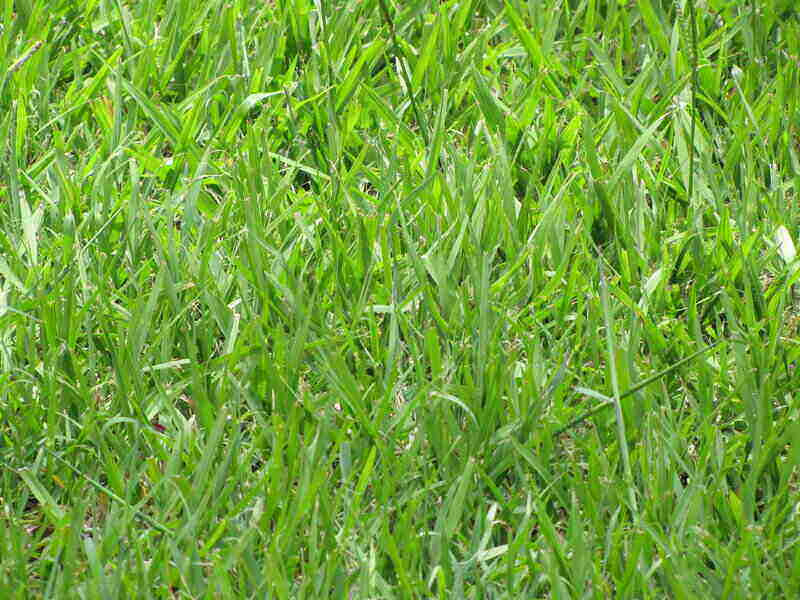
Photo Credit: Forest and Kim Starr / Flickr / CC BY 2.0
A warm-season grass that thrives in St. Augustine’s hot and humid climate, bahiagrass has a coarse texture and light green color, which can add a unique look and feel to your lawn. It has deep roots that can reach up to 5 feet underground, allowing it to access moisture and nutrients even during periods of low rainfall. Although, prolonged drought can cause it to go dormant.
While you still need to provide enough moisture, avoid overwatering bahiagrass. Overwatering can weaken the grass, making it more vulnerable to weed growth. Since this grass variety is relatively drought-tolerant, it’s best to water it only when necessary. It also has low fertilizer requirements but can be susceptible to iron deficiency.
Classification: Warm-season grass
Spreads by: Rhizomes
Shade tolerance: Low – it thrives in direct sun exposure
Drought resistance: High
Foot traffic tolerance: Low
Maintenance needs: Moderate to high – control seed heads by mowing every week or two (during summer, mow more often)
Mowing height: 3-4 inches
Potential for disease: Low resistance – mostly prone to dollar spot (especially the Pensacola cultivar) and ergot diseases
Potential for pests: Moderate resistance – can be susceptible to mole crickets
Soil pH: 5.5-6.5
Soil type: Grows well in almost all soil types but prefers sandy loam
Other notes: Planting with seeds may take longer to establish compared to using sod. Although plugging and sprigging methods are feasible, they may leave the lawn more vulnerable to weed infestation.
2. Bermudagrass
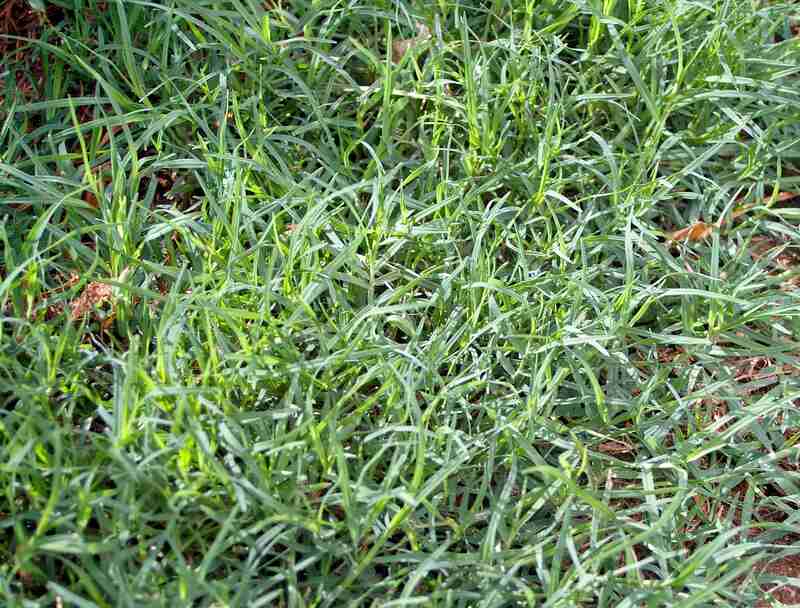
Photo Credit: Bidgee / Wikimedia Commons / CC BY-SA 3.0
Bermudagrass is a top choice among homeowners for its resilience in extreme weather conditions and other challenging environments. This hardy grass variety also can withstand heavy foot traffic, making it ideal for areas with high activity, like athletic fields and golf courses.
One aspect that makes it perfect for St. Augustine lawns is its love for sunlight. It requires ample direct sunlight to flourish and maintain its luscious appearance. Additionally, bermudagrass boasts exceptional drought tolerance, enabling it to remain green and thrive in low rainfall conditions or during high temperatures.
Classification: Warm-season grass
Spreads by: Stolons and rhizomes
Shade tolerance: Low – some cultivars need more direct sun exposure than others
Drought tolerance: High – extended periods of drought can cause it to become dormant
Foot traffic tolerance: High
Maintenance needs: Moderate to high – it needs frequent fertilization, watering, and mowing
Recommended mowing height: 1-2 inches – during extreme heat or drought, increase the mowing height to retain moisture
Potential for disease: Moderate resistance – can be susceptible to dollar spot, brown patch, spring dead spot, and leaf spot
Potential for pests: Low resistance – can be prone to armyworms, hunting billbugs, white grubs, and mole crickets
Soil pH: 6-6.5
Soil type: Grows well in most soil types
Other notes: The rapid growth of this grass species can pose some challenges, as it can quickly spread and encroach on other areas of the lawn that require more meticulous maintenance.
3. Centipedegrass
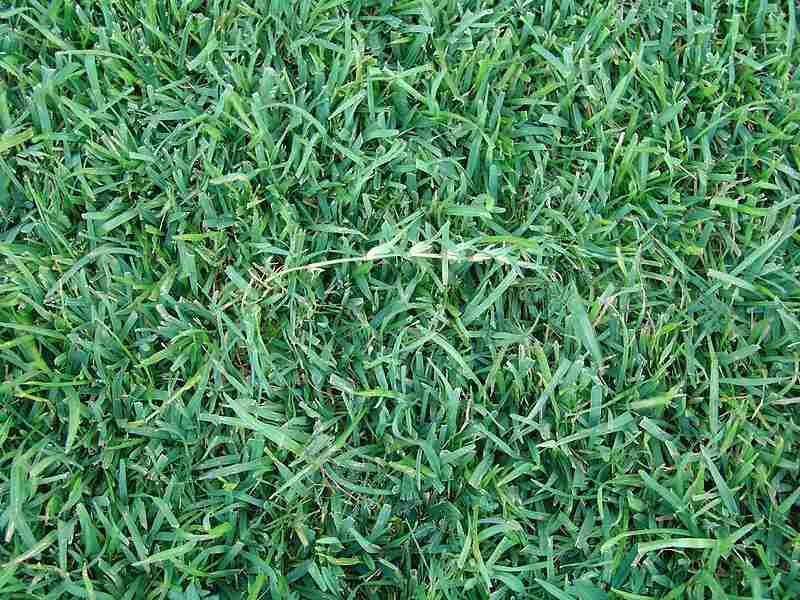
Photo Credit: James Becwar / Wikimedia Commons / CC0 1.0
A highly sought-after grass variety in Florida, centipedegrass is favored for its ability to create lush lawns that require minimal maintenance. With this slow-growing grass type, you won’t have to spend countless hours each week tending to your lawn.
This grass variety grows best in full sun but also can tolerate partial shade, making it ideal for lawns with mixed sun exposure. It has a medium to light green color and a fine texture that gives it a soft feel.
Nonetheless, one of its drawbacks is its low tolerance to heavy foot traffic, so centipedegrass is not ideal for areas with high human activity. As such, homeowners who frequently host backyard events or have several pets or children may want to consider alternative grass types.
Classification: Warm-season grass
Spreads by: Stolons
Shade tolerance: Moderate – grows well in sun-exposed areas but can still survive even with just six hours of sunlight per day
Drought tolerance: Low to moderate – prolonged drought may cause it to turn brown and become dormant
Foot traffic tolerance: Low
Maintenance needs: Low – requires minimal mowing, watering, and fertilization
Recommended mowing height: 1.5-2 inches – for lawns in shaded areas, raise the mower height by 1/2 inch
Potential for disease: Moderate resistance – can be susceptible to iron chlorosis and centipedegrass decline
Potential for pests: Low resistance – mostly prone to spittlebugs, sod webworms, nematodes, mole crickets, and ground pearl insects
Soil pH: 5-6
Soil type: Well-drained, fertile, acidic soils
Other notes: Perform seeding in late spring or early summer to give it enough time to grow and become established. Since it germinates slowly, avoid seeding too late in the season.
4. Seashore Paspalum
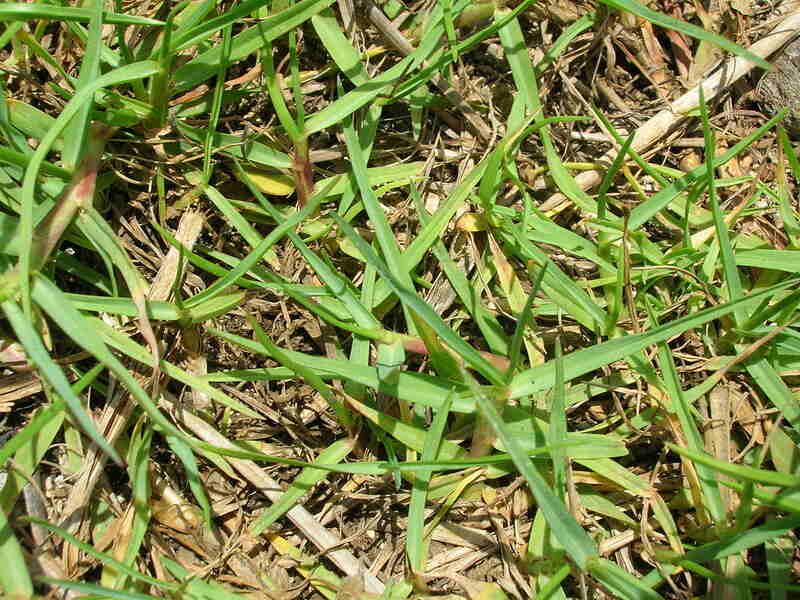
Photo Credit: Forest & Kim Starr / Wikimedia Commons / CC BY 3.0
If you’re living near the coast and struggling with salinity issues, you may want to consider seashore paspalum as your lawn grass. Also known as saltwater couch grass, this grass type is commonly used in sports turf, but it can be a suitable option for home lawns where saltwater is a problem.
Unlike other grass types, seashore paspalum requires non-saline water during its establishment period. But once established, it can tolerate ocean-level salinity, making it ideal for beachfront lawns and yards in coastal areas.
This grass variety has medium-textured leaves and boasts a lush, dark green color during summer, making it an attractive option for homeowners who value aesthetics. Note, though, that seashore paspalum is a high-maintenance grass type requiring regular professional care. But if you can keep it well-maintained, it has a low chance of becoming affected by insects and diseases.
Classification: Warm-season grass
Spreads by: Stolons
Shade tolerance: Very Low
Drought tolerance: Very Low
Foot traffic tolerance: High
Maintenance needs: High – needs frequent watering, mowing, and fertilization
Recommended mowing height: 1-2 inches
Potential for disease: High resistance – but can be affected by Helminthosporium disease, pythium blight, and take-all root rot if not properly cared for
Potential for pests: High resistance – but it can be susceptible to fall armyworms, sod webworms, and mole crickets if not properly maintained
Soil pH: 6-8
Soil type: Grows well in most soil types
Other notes: It isn’t tolerant of cold weather, and overfertilization can cause it to become thatchy. Most herbicides are harmful to this grass, so it’s best to avoid using those not labeled for use on seashore paspalum.
5. St. Augustinegrass
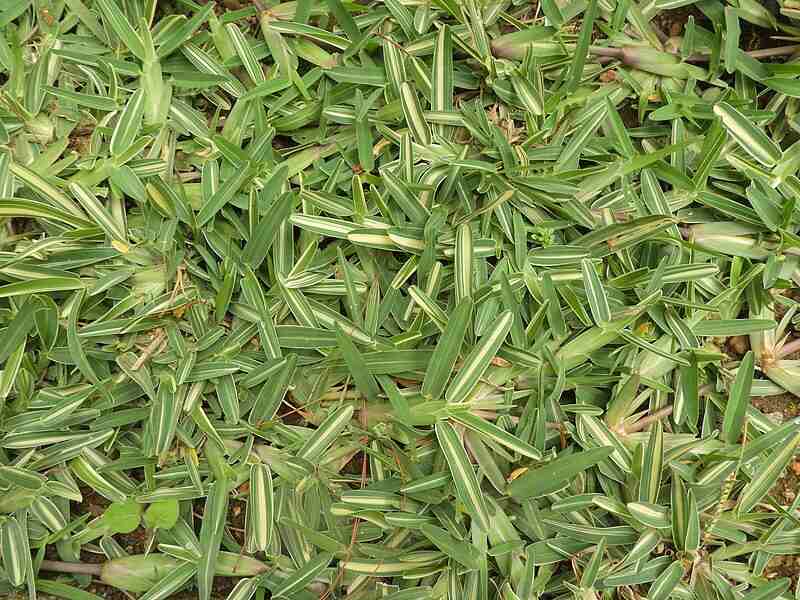
St. Augustinegrass
Photo Credit: Yercaud-elango / Wikimedia Commons / CC BY-SA 4.0
Also known as Charleston grass, St. Augustinegrass is the go-to grass option for homeowners in St. Augustine, particularly those living in coastal areas. With its ability to tolerate both sandy and clay soils, this grass variety is a great fit for the region. It can withstand hot and salty conditions but favors warm winters and moist soil conditions.
With its broad leaves and flat stems, you can create a beautiful and lush blue-green lawn. This hurricane-resistant grass is excellent at crowding out most weeds but can be susceptible to lawn diseases and pests like armyworms and chinch bugs.
Classification: Warm-season grass
Spreads by: Stolons
Shade tolerance: Moderate – some cultivars can tolerate shade better than others
Drought tolerance: Moderate
Foot traffic tolerance: Moderate
Maintenance needs: Moderate to high – requires frequent mowing, watering, and fertilization
Recommended mowing height: 2.5-4 inches (mow tall in shade, dwarf cultivars 2.5-3 inches, and standard cultivars 3-4 inches)
Potential for disease: Low to moderate resistance – mostly prone to gray leaf spot, large patch, and take-all root rot
Potential for pests: Low resistance – susceptible to armyworms, chinch bugs, cutworms, grass loopers, grubs, webworms, and mole crickets
Soil pH: 6-7.5
Soil type: Grows well in most soil types but prefers moderately fertile and moist (not muddy) soils
Other notes: While it’s naturally found in coastal regions, this grass also can thrive in inland areas with the right growing conditions. But it doesn’t perform well in compacted clay soils.
6. Zoysiagrass
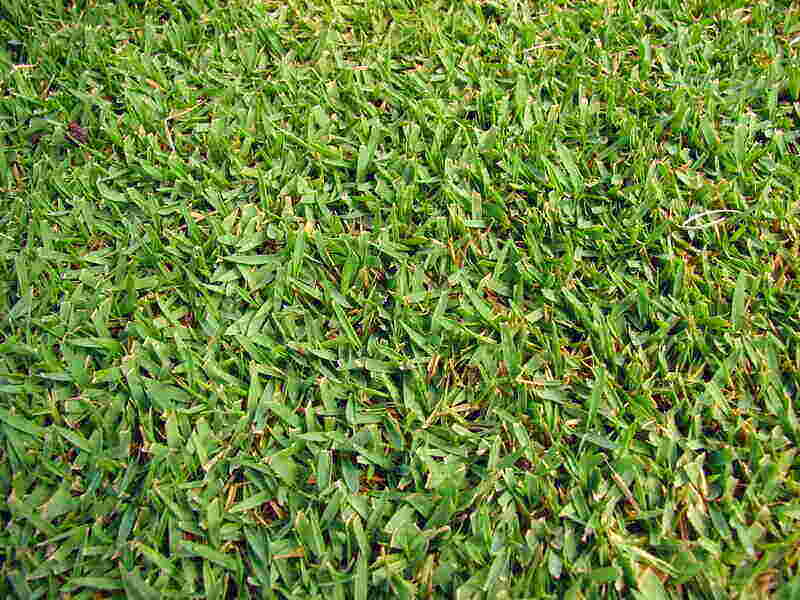
Photo Credit: Forest & Kim Starr / Wikimedia Commons / CC BY 3.0
For homeowners looking for a beautiful lawn that’s easy to maintain, Zoysiagrass is an excellent option. This grass variety has a light to medium green hue and provides excellent coverage due to its dense growth pattern. Although different cultivars can have varying characteristics, most of them have a medium to coarse texture.
This grass type is also salt-tolerant, making it a perfect choice for St. Augustine’s coastal areas. In addition, Zoysiagrass is quite versatile, able to tolerate a wide range of temperatures, including drought and cold weather. Its extensive root system allows it to access moisture and nutrients from deep underground, even during dry spells and periods of low rainfall.
Zoysiagrass has a dense growth pattern that makes it ideal for areas with heavy traffic and activity, such as homes with pets and children. It requires minimal maintenance, but if you want a more carpet-like growth, you should add nitrogen during its growing season.
Classification: Warm-season grass
Spreads by: Stolons and rhizomes
Shade tolerance: Low to moderate – it requires a lot of time under the sun
Drought tolerance: High – but you must give it supplemental water during extended dry spells
Foot traffic tolerance: High
Maintenance needs: Low to moderate
Recommended mowing height: 1-2.5 inches
Potential for disease: Moderate resistance – can be susceptible to curvularia, leaf spot, brown patch, dollar spot, rust, spring dead spot, powdery mildew, pythium blight, root decline, and fairy wings
Potential for pests: Moderate resistance – common pests include armyworms, chinch bugs, nematodes, mole crickets, hunting billbugs, grubs, and sod webworms
Soil pH: 6-6.5
Soil type: Grows well in well-drained soils but can survive in most soil types
Other notes: Late spring through early summer, typically from April to July, is an ideal time for seeding, as this allows for a full growing season before the onset of winter weather.
FAQ About St. Augustine Grass Types
If you’re looking for grass options that will work well in shady areas, your two options would be St. Augustinegrass and centipedegrass. St. Augustinegrass is known for having excellent shade tolerance and can thrive even in areas that receive only four hours of sunlight per day.
But if you don’t like St. Augustinegrass, you can opt for centipedegrass instead. It’s a low-maintenance option that also does well in shady yards.
Proper lawn watering is crucial to maintaining healthy grass in St. Augustine. As a general rule, you should aim to water your lawn deeply and infrequently, typically once or twice a week, depending on the season and weather conditions.
To ensure your lawn is getting enough water, you should aim for 1 inch of water per week, which can be achieved through either rainfall or irrigation. But take note of the irrigation schedule from the St. Johns River Water Management District to ensure you’re complying with the city ordinance.
Avoid overwatering, as it can lead to fungal growth and other issues. Additionally, watering in the early morning or evening when the sun is less intense can help prevent evaporation and ensure your lawn is getting the most out of each watering session.
The best grass variety for this situation is seashore paspalum. This grass variety is known for its excellent salt tolerance. Pair it with native plants that are also salt-tolerant, like coastal sweet pepperbush, so you won’t have to worry about needing non-saline water.
Choose the Right Grass for Your St. Augustine Landscape
Choosing the right grass variety is essential to achieving a stunning lawn. With a range of grass types to choose from, you can find one that suits your specific needs and preferences. Consider important factors like the amount of shade and sunlight in your lawn, soil type, and the presence of salty water.
Whether you opt for the salt-tolerant seashore paspalum, the shade-tolerant St. Augustinegrass, or the versatile Zoysiagrass, you can create a lawn that will impress your family and guests. With the right care and maintenance, your lawn can thrive even in the Ancient City’s unique coastal environment.
Create an outdoor space that will provide endless enjoyment for years to come. Consult with a St. Augustine lawn care professional today for expert help in determining the ideal grass type for your lawn.
Main Image Credit: Matt Kieffer / Flickr / CC BY-SA 2.0